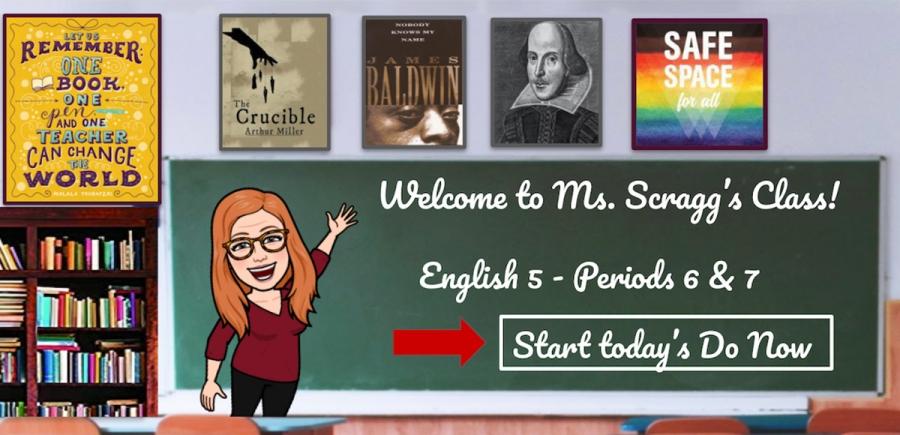Teachers are creative problem-solvers who rise to the occasion when they are faced with difficult circumstances. Take one such trend that has emerged from the necessity for remote teaching during the COVID-19 pandemic: the Bitmoji classroom.
New York City public school teachers have designed these virtual spaces to use as landing pages for remote classrooms to increase connection and incorporate meaningful content for students.
What’s a Bitmoji? It’s a personal emoji, or a little cartoon version of yourself. To create a Bitmoji, you can either make one with the free Bitmoji app for your smartphone or download the Bitmoji extension in Google Chrome. The app then leads you through customizing your likeness in just about every way, from the shape of your face to your footwear. Once you make your digital doppelganger, you can arrange it in a variety of postures and expressions, and then copy it into your classroom to represent you.
Designing your Bitmoji classroom takes time at first, but once you have it built, it’s easy to adapt and make daily changes. Bitmoji classrooms work seamlessly with Google Classroom and Google Slides, the platforms most New York City teachers are already using. And sure, Bitmoji classrooms are cute and fun, but teachers are using them for valid purposes. When done mindfully, Bitmoji classrooms can increase motivation, provide an organized hub for classroom materials and give students some structure in a time when life and school can be unpredictable.
If you’re interested in learning how to make your own Bitmoji classroom, here are some tips:
Have an instructional objective. Don’t get hung up on bells and whistles. Ask yourself: What purpose do I want my Bitmoji classroom to serve? Will it contain links to essential materials my students need? Will I write “do nows” on the whiteboard? Will I link to virtual activities? Whatever combination you choose, consider its function before you start designing your Bitmoji classroom.
Don’t overwhelm with too much visual stimulation. It may be fun to grab lots of cool room decor and line walls with posters to design your dream classroom, but that can make it difficult for your students to find key information and it may be overly stimulating for special needs students. Streamline instead. It’s OK to reflect your personal tastes and interests, but remember to keep your virtual classroom functional, too.
Create your classroom to reach all learners. Keep language simple for bilingual and English language learners. Make sure fonts are large and easy to read. Replace words with photos or symbols. Use arrows, colors or other visuals to indicate important information.
Be welcoming and culturally mindful. Many teachers try to replicate their real classrooms to give students a sense of comfort and familiarity. It’s a good idea to include familiar items that students would recognize: school logos, book titles, people or authors you’re studying, or other objects that relate to your grade level, subject area or school. Be sure to include items in your classroom that acknowledge your students’ different cultures and backgrounds, too.
Ready to get started? Check out these Bitmoji tutorials and other resources:
- Watch this excellent step-by-step video tutorial by a fellow teacher on YouTube »
- See several good examples of Bitmoji classrooms for inspiration »
- Read the wikiHow article on using the Bitmoji extension for Google Chrome »
- The Hello Teacher Lady website has a Bitmoji Classroom FAQ »
Sandy Scragg is an instructional technology specialist with 20 years of experience in New York City public schools.
